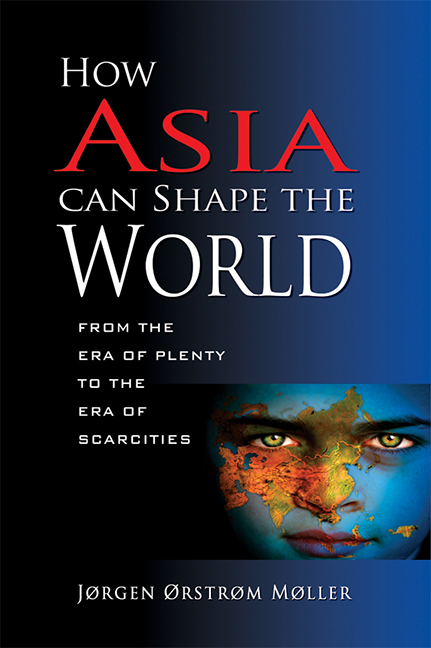2 - FUTURE FORECASTING
Published online by Cambridge University Press: 21 October 2015
Summary
CHANGE, ASIA CERTAINLY WILL
Change, Asia certainly will. The big question is how these changes, likely to be disruptive to economies and societies, will affect behaviour. The surrounding environment, developments inside nation states, and global trends such as technology and human interaction (values, norms, and ethics) are undergoing an almost dramatic change, which is why the starting point must be to form an idea of how the framework for Asia's future development will look. On that basis we can try to form an opinion of what will happen. The burning question, so difficult to grapple with, is how changes will affect behavioural patterns of people.
There is no reason to hide the fact that any analysis must start with economic growth, because growing financial resources over the next twenty-five years is a must. But how do we achieve this, what kind of growth is in the pipeline, and is it the kind of growth we want?
From 1979 until about 2007 Asia benefited from high global growth, low prices for energy and commodities, including food, no real water problems, a rising available and elastic labour force all over the region except in Japan and Korea, and little focus on pollution, the environment, and climate change. Asia's political job was to manage economic growth.
Over the next twenty-five years all this will change and for the worse. Global growth will almost certainly be lower, taking demographic trends and the economic outlook for the United States and Europe into account. Commodity prices including those of energy and food will go up. The environment will need much more attention that calls for financial resources. In Asia demographic trends will split the continent into three groups of nation states: falling population, stagnant population, and rising population. A number of problems that could be, and were disregarded, will surface, calling for political solutions that require financial resources. Asia's political job turns into establishing conditions for the preferred economic growth.
Growth and stability support each other. No growth or low growth endangers social stability; social instability dents growth prospects. If Asia and its political leaders strike the right balance between changes and opportunities, Asia can look forward to an era of stable growth; if not the prospect of social unrest framing the life of three billion people jumps from theoretical to a policy perspective to be reckoned with.
- Type
- Chapter
- Information
- How Asia Can Shape the WorldFrom the Era of Plenty to the Era of Scarcities, pp. 105 - 161Publisher: ISEAS–Yusof Ishak InstitutePrint publication year: 2010



